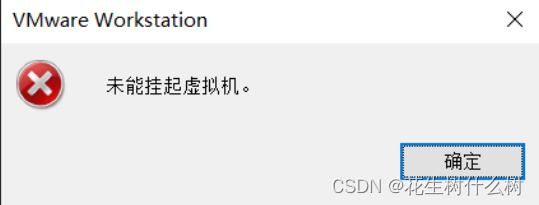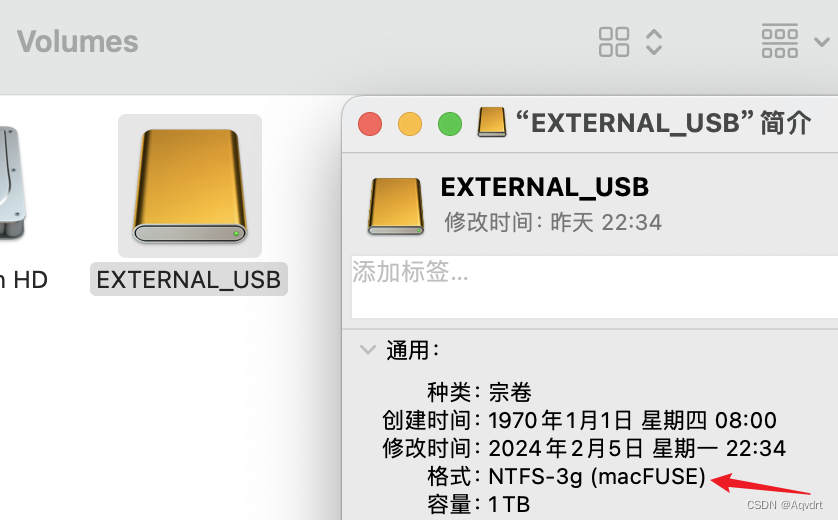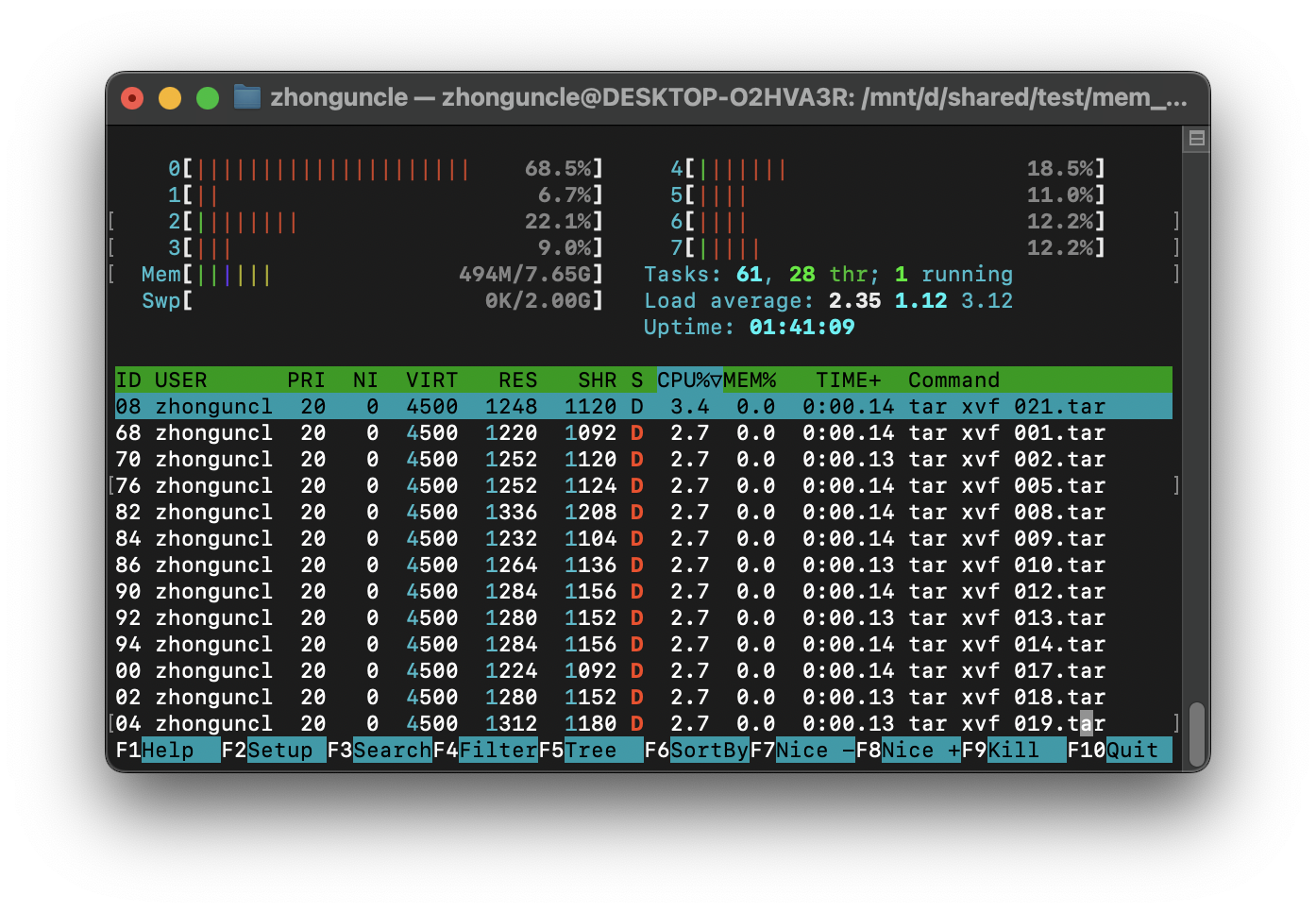[sharp] # 井号
# This line is a comment.
echo "A comment will follow." # Comment here.
# ^ Note whitespace before #
# A tab precedes this comment.
initial=( `cat "$startfile" | sed -e '/#/d' | tr -d '\n' |\
sed -e 's/\./\. /g' -e 's/_/_ /g'` )
# Delete lines containing '#' comment character.
# 该命令用于删除包含#号的行
5.当然,在echo命令中被引用或者被转义的#号不会成为注释,#号也会出现在特定的参数替换结构中及一些数值常量表达式中
echo "The # here does not begin a comment."
echo 'The # here does not begin a comment.'
echo The \# here does not begin a comment.
echo The # here begins a comment.
echo ${PATH#*:} # 参数替换,不是注释
echo $(( 2#101011 )) # 数制转换,不是注释
[root@centos7 /data/test]$echo ${PATH#*:}
/usr/local/sbin:/usr/local/bin:/usr/sbin:/usr/bin:/root/bin
[root@centos7 /data/test]$echo ${PATH}
/usr/lib64/qt-3.3/bin:/usr/local/sbin:/usr/local/bin:/usr/sbin:/usr/bin:/root/bin
6.标准的单双引用符号和转义符号(“‘/)都能转义#号
[semicolon] ; 分号
echo hello; echo there
if [ -x "$filename" ]; then # Note the space after the semicolon.
#+ ^^
echo "File $filename exists."; cp $filename $filename.bak
else # ^^
echo "File $filename not found."; touch $filename
fi; echo "File test complete."
[double semicolon] ;; 双分号
case "$variable" in
abc) echo "\$variable = abc" ;;
xyz) echo "\$variable = xyz" ;;
esac
[period] . 英文句号
1.作为文件名的一部分,当一个文件以.开头,则为隐藏文件,ls不会显示,使用ls -a
bash$ touch .hidden-file
bash$ ls -l
total 10
-rw-r--r-- 1 bozo 4034 Jul 18 22:04 data1.addressbook
-rw-r--r-- 1 bozo 4602 May 25 13:58 data1.addressbook.bak
-rw-r--r-- 1 bozo 877 Dec 17 2000 employment.addressbook
bash$ ls -al
total 14
drwxrwxr-x 2 bozo bozo 1024 Aug 29 20:54 ./
drwx------ 52 bozo bozo 3072 Aug 29 20:51 ../
-rw-r--r-- 1 bozo bozo 4034 Jul 18 22:04 data1.addressbook
-rw-r--r-- 1 bozo bozo 4602 May 25 13:58 data1.addressbook.bak
-rw-r--r-- 1 bozo bozo 877 Dec 17 2000 employment.addressbook
-rw-rw-r-- 1 bozo bozo 0 Aug 29 20:54 .hidden-file
2.句号在目录中,一个句号.表示当前目录,两个句号…表示当前目录的父目录
bash$ pwd
/home/bozo/projects
bash$ cd .
bash$ pwd
/home/bozo/projects
bash$ cd ..
bash$ pwd
/home/bozo/
3.句号在移动文件的命令中表示目标文件夹,此时的目标文件夹常常是当前目录
bash$ cp /home/bozo/current_work/junk/* .
# 拷贝junk/文件夹下的所有文件到当前目录
4.字符匹配时,句号作为正则表达式的一部分表示匹配任意一个字符
[double quote] ’ ” 单双引号
- “STRING” preserves (from interpretation) most of the specia characters within STRING
- ‘STRING’ preserves all special characters within STRING. This is a stronger form of quoting than “STRING”
- 部分(弱)引用:“STRING” 这种写法表示 解释器会认为STRING中的小部分特殊字符有特殊意义
- 全(强)引用:‘STRING’ 这种写法表示 解释器会认为STRING中的所有特殊字符都无特殊意义
[root@centos7 /data]$var=jjjj
[root@centos7 /data]$cat file
test
ddd
[root@centos7 /data]$sed "s/test/${var}/" file #双引号表示部分特殊字符具备特殊意义,此处${var}表示jjjj
jjjj
ddd
[root@centos7 /data]$sed 's/test/${var}/' file #单引号表示所有特殊字符均无特殊意义,此处${var}表示包含6个字符的字符串
${var}
ddd
[root@centos7 /data]$
[comma operator] , 逗号操作符
[root@centos7 ~]$let "t2 = ((a = 9, 15 / 3))"
[root@centos7 ~]$echo $t2 # 此处返回值为15/3=5
5
[root@centos7 ~]$echo $a
9
for file in /{,usr/}bin/*calc
# ^ Find all executable files ending in "calc"
#+ in /bin and /usr/bin directories.
do
if [ -x "$file" ]
then
echo $file
fi
done
# /bin/ipcalc
# /usr/bin/kcalc
# /usr/bin/oidcalc
# /usr/bin/oocalc
[backslash] \ 反斜杠
\X 该写法将转义字符X,等价于'X',反斜杠也会用于转义'和"。
[forward slash] / 斜杠
[root@centos7 ~]$cat /home/bozo/projects/Makefile
-
斜杠也是除法运算符
[backquotes] ` 反引号
[root@centos7 ~]$num=`seq 1 10`
[root@centos7 ~]$echo $num
1 2 3 4 5 6 7 8 9 10
[colon] : 冒号
-
冒号在shell中表示”NOP” (no op, a do-nothing operation),一个不做任何操作的命令;”:”冒号命令属于bash builtin类型,其命令退出状态为True(0)
[root@centos7 ~]$:
[root@centos7 ~]$echo $?
0
while :
do
operation-1
operation-2
...
operation-n
done
# 等同于:
# while true
# do
# ...
# done
2.在if/then语句中作为占位符
if condition
then : # 什么也不做,分支继续
else # Or else ...
take-some-action
fi
[root@centos7 ~] : ${username=`whoami`}
# ${username=`whoami`} 不以: 开头则会给出错误提示
# unless "username" is a command or builtin...
[root@centos7 ~] : ${1?"Usage: $0 ARGUMENT"}
[root@centos7 ~]$: ${HOSTNAME?} ${USER?} ${MAIL?}
[root@centos7 ~]$echo $?
0
# 如果上面某个或多个必要的环境变量未设置,则会打印一条错误消息,此时我的电脑三个环境变量都已经存在,所以没有错误消息
5.和重定向符号>配套使用,清除某个文件的内容,不改变其原有的权限属性-$: > file
[root@centos7 /data/test]$cat hello
HELLO
[root@centos7 /data/test]$: > hello # 此处清空hello文件,如果hello不存在,则创建之
[root@centos7 /data/test]$cat hello
[root@centos7 /data/test]$
注意:上面用法等同于“cat /dev/null > hello”
然而,使用上面的方法不会产生子进程,因为“:”是一个builtin类型
如果和追加重定向符>>配合使用,则不对文件产生任何影响;无对应文件则创建之
6.分号还可以用作注释,但是bash会在以分号开头的注释中检查错误;而以#号开头的注释是关闭错误检查的
[root@centos7 /data/test]$cat test.sh
#!/bin/bash
#
: This is a comment that generates an error, ( if [ $x -eq 3] ) #以分号开头的注释含有错误代码
[root@centos7 /data/test]$bash -n test.sh
test.sh: line 13: syntax error near unexpected token `('
test.sh: line 13: `: This is a comment that generates an error, ( if [ $x -eq 3] )' #bash检查出分号开头的注释存在错误
[root@centos7 /data/test]$
7.分号还可以作为域分隔符,如文件:/etc/passwd和环境变量PATH
[root@centos7 ~]$echo $PATH
/usr/lib64/qt-3.3/bin:/usr/local/sbin:/usr/local/bin:/usr/sbin:/usr/bin:/root/bin
8.分号也可以作为函数名,但是不推荐这种做法,会使得代码不易读
:() # 该函数的函数名为分号
{
echo "The name of this function is "$FUNCNAME" "
# Why use a colon as a function name?
# It's a way of obfuscating your code.
}
注意:在比较新的bash版本中已经不允许这样做,但是可以使用_下划线作为函数名
9.冒号可以用作空函数中的占位符
not_empty ()
{
:
} # Contains a : (null command), and so is not empty.
[bang] ! 感叹号
1.感叹号用来对一个test测试条件或者命令退出状态取反,感叹号属于bash关键字
2.在不同的上下文中,!的出现也意味着间接变量引用
1092 cls
1093 ll
1094 history
[root@centos7 ~]$!l # 该写法表示bash执行history命令记录中以l开头的最近一次执行过的命令
ll
total 32
-rw-r--r--. 1 root root 4352 Sep 17 11:04 1
drwxr-xr-x. 3 root root 17 Aug 24 13:13 Desktop
drwxr-xr-x. 2 root root 6 Aug 24 13:06 Documents
drwxr-xr-x. 2 root root 6 Aug 24 13:06 Downloads
drwxr-xr-x. 2 root root 6 Aug 24 13:06 Music
drwxr-xr-x. 2 root root 6 Aug 24 13:06 Pictures
drwxr-xr-x. 2 root root 6 Aug 24 13:06 Public
drwxr-xr-x. 2 root root 6 Aug 24 13:06 Templates
drwxr-xr-x. 2 root root 6 Aug 24 13:06 Videos
-rw-------. 1 root root 2053 Aug 24 13:03 anaconda-ks.cfg
-rw-r--r--. 1 root root 2101 Aug 24 13:05 initial-setup-ks.cfg
-rwxr-xr-x. 1 root root 3121 Sep 12 00:04 reset.sh.bak0
-rw-r--r--. 1 root root 4 Sep 4 11:25 somaxconn~
-rw-r--r--. 1 root root 4 Sep 4 11:29 somaxcony~
-rw-r--r--. 1 root root 4 Sep 4 11:29 somaxconz~
[root@centos7 ~]$
[asterisk] * 星号通配符
1.星号在文件名通配操作中扮演通配符的角色,表示匹配某文件夹下的所有文件名;与其他具体字符结合表示匹配0个或者多个任意字符
[root@centos7 /data]$ echo *
c_program py_scripts rpmPacksges scripts test test_scripts ttt.sh
[root@centos7 ~]$ echo /data/*
/data/c_program /data/py_scripts /data/rpmPacksges /data/scripts /data/test /data/test_scripts /data/ttt.sh
2.星号在正则表达式中表示:匹配其前面的字符任意次,包括0次
3.在算术运算操作中,星号表示乘法操作符
4.** 两个星号一起是运算符中的乘方操作符号,比如2**8=256
5.** 两个星号一起在bash4.0版本以上内核中表示
#!/bin/bash4
# filelist.bash4
shopt -s globstar # 必须使能 globstar, 否则 ** 没用.
# globstar 是bash4.0中新增的shell选项
echo "Using *"; echo
for filename in *
do
echo "$filename"
done # 列出当前目录的文件 ($PWD).
echo; echo "--------------"; echo
echo "Using **"
for filename in **
do
echo "$filename"
done # 递归列出完整的文件树.
exit
# 列出当前目录输出如下
Using *
allmyfiles
filelist.bash4
--------------
# 递归列出完整的文件树输出如下
Using **
allmyfiles
allmyfiles/file.index.txt
allmyfiles/my_music
allmyfiles/my_music/me-singing-60s-folksongs.ogg
allmyfiles/my_music/me-singing-opera.ogg
allmyfiles/my_music/piano-lesson.1.ogg
allmyfiles/my_pictures
allmyfiles/my_pictures/at-beach-with-Jade.png
allmyfiles/my_pictures/picnic-with-Melissa.png
filelist.bash4
[test operator] ? 测试操作符
1.在特定的表达式中,问号表示对一个条件的测试
2.在双括号结构中,问号表现为C风格三元操作符的组成部分
# condition?result-if-true:result-if-false
# 条件?条件为真的值:条件为假的值
(( var0 = var1<98?9:21 ))
# ^ ^
# if [ "$var1" -lt 98 ]
# then
# var0=9
# else
# var0=21
# fi
${paramseter?err_msg}, ${parameter:?err_msg}
# 如果parameter已经存在,就使用其;否则打印err_msg退出脚本,并且退出状态为1
# 上面两种写法几乎同等,后面写法中的冒号表示只有当parameter已经被声明且为空时(null)就使用
4.作为通配符,在文件名通配中表示匹配任何当个字符;在扩展正则表达式中表示匹配其前面的某单个字符。
[$] 变量替换符(获取一个变量所存储的内容)
[root@centos7 /data/globbing]$var1=123
[root@centos7 /data/globbing]$var2=hello
[root@centos7 /data/globbing]$echo $var1; echo $var2
123
hello
[$] end-of-line 在正则达式中表匹配文本的行结束位置,常用于锚定;在linux系统中文本文件的行结束符也是$
[root@centos7 /data/globbing]$ls |grep '.*[0-9]$' # 表示匹配以数字结尾的文件名
10file.1
10file.2
1SdsflDSLFsdf677671
1SdsflDSLFsdf677672
{a-z}dsf3adsf1
DSdsflDSLFsdf677671
[root@centos7 /data/globbing]$ls |grep '.*[a-zA-Z]$' # 表示匹配以字母结尾的文件名
10file.txt
1SdsflDSLFsdf67767A
1SdsflDSLFsdf67767B
a123321a
A123321A
a123321b
[root@centos7 /data/globbing]$echo hello > 10file.1
[root@centos7 /data/globbing]$cat -A 10file.1
hello$ # cat -A 查看文本的不可打印字符,包括tab键和行结束符$等。
[${}] 参数替换符,获取花括号中的变量所存储的内容;几乎和$等同,在某些情况下使用${}(例如:使用字符串连接不同的变量所存储的内容)
[root@centos7 /data/globbing]$echo $USER # 环境变量USER,保存有当前用户的用户名,使用$USER获取
root
[root@centos7 /data/globbing]$echo ${USER} # 此处功能同$
root
[root@centos7 /data/globbing]$your_id=${USER}-on-${HOSTNAME} # 此处使用'-on-' 将USER和HOSTNAME存储的内容连接起来;获取它们的内容必须用${}
[root@centos7 /data/globbing]$echo "$your_id"
root-on-centos7.magedu.steve # 连接后的结果
[$’ … ‘]
[steve@centos7 ~]$echo $'\x21'
!
[steve@centos7 ~]$echo $'\x22' # 十六进制x22代表ASCII码中的双引号 "
"
[steve@centos7 ~]$echo $'\037'
[$*, $@] 位置参数,存储所有的位置参数,有区别
[$_ ] 返回命令的最后一个参数,在命令行中使用
[root@centos7 /data/scripts]$ echo 1 2 3 4 > test
[root@centos7 /data/scripts]$ echo $_
4
[$?] 该环境变量存储退出状态;可以是命令、函数或者脚本的退出状态
[root@centos7 /data/test]$cat exit_status.sh
#!/bin/bash
echo hello
echo $? # 打印hello成功,放回的退出状态值为0.
lskdf # Unrecognized command.
echo $? # 无该命令命令,执行失败,退出状态非0.
echo
exit 113 # 脚本结束后使用echo $? 查看,脚本退出状态为113.
[root@centos7 /data/test]$bash exit_status.sh
hello
0
exit_status.sh: line 4: lskdf: command not found
127
[root@centos7 /data/test]$echo $?
113
[$$] 为PID变量,存储其出现在的脚本所属的进程的进程号
[root@centos7 ~]$pstree -p |grep sshd.*bash
|-sshd(1164)---sshd(1842)---bash(1848)---bash(6007)-+-grep(6043)
[root@centos7 ~]$echo $$ # 当前所在bash进程为6007
6007
[root@centos7 ~]$exit # 退出6007号bash进程
exit
[root@centos7 ~]$echo $$ # 此时$$记录1848
1848
[()] 圆括号
1.圆括号可以用来执行其包括的一组命令,各个命令使用分号;隔开
[root@centos7 ~]$(a=hello; echo $a)
hello
- 注意;结构(command1;command2)中,shell会生成一个子shell进程来运行括号内的多个命令。括号内的变量(子shell中)不被括号外的命令读取,父进程(父shell)无法读取子进程的变量。
a=123
( a=321; )
echo "a = $a" # a = 123
# "a" 可视为本地变量.
Array=(element1 element2 element3)
[{xxx,yyy,zzz,…}] 花括号展开
1.有如下用法
echo \"{These,words,are,quoted}\" # " 添加前缀和后缀(prefix and suffix)
# "These" "words" "are" "quoted"
cat {file1,file2,file3} > combined_file
# 链接三个文件 file1, file2, and file3 成一个文件combined_file.
cp file22.{txt,backup}
# Copies "file22.txt" to "file22.backup"
[root@centos7 /data/test]$echo {file1,file2}\ :{\ A," B",' C'}
file1 : A file1 : B file1 : C file2 : A file2 : B file2 : C
[{a…z}] 扩展的花括号展开
echo {a..z} # a b c d e f g h i j k l m n o p q r s t u v w x y z
# Echoes characters between a and z.
echo {0..3} # 0 1 2 3
# Echoes characters between 0 and 3.
base64_charset=( {A..Z} {a..z} {0..9} + / = )
# Initializing an array, using extended brace expansion.
[{}] 花括号代码块
# 例子1
bash$ { local a;
a=123; }
bash: local: 使用local关键字定义的变量为本地变量,只能在某个函数中使用
# 例子2
a=123
{ a=321; }
echo "a = $a" # a = 321 (花括号中的变量2被打印)
# Thanks, S.C.
2.花括号所包含的代码块一般有I/O重定向
#!bin/bash
File=/etc/fstab
{
read line1
read line2
} < $File
echo "First line in $File is:"
echo "$line1"
echo
echo "Second line in $File is:"
echo "$line2"
exit
#!/bin/bash
# rpm-check.sh
# Queries an rpm file for description, listing,
#+ and whether it can be installed.
# Saves output to a file.
#
# This script illustrates using a code block.
SUCCESS=0
E_NOARGS=65
if [ -z "$1" ]
then
echo "Usage: `basename $0` rpm-file"
exit $E_NOARGS
fi
{ # Begin code block.
echo
echo "Archive Description:"
rpm -qpi $1 # Query description.
echo
echo "Archive Listing:"
rpm -qpl $1 # Query listing.
echo
rpm -i --test $1 # Query whether rpm file can be installed.
if [ "$?" -eq $SUCCESS ]
then
echo "$1 can be installed."
else
echo "$1 cannot be installed."
fi
echo # End code block.
} > "$1.test" # Redirects output of everything in block to file.
echo "Results of rpm test in file $1.test"
# See rpm man page for explanation of options.
exit 0
- 不像在()圆括号中的命令组合会产生新的shell子进程,花括号{}中的代码通常不产生子shell。
for((n=1; n<=10; n++)) # 注意:圆括号后无内容,直接跟花括号代码块
# No do!
{
echo -n "* $n *"
}
# No done!
# Outputs:
# * 1 ** 2 ** 3 ** 4 ** 5 ** 6 ** 7 ** 8 ** 9 ** 10 *
# And, echo $? returns 0, so Bash does not register an error.
5.花括号亦可用作文本占位符,一般用于xargs -i(替换字符串选项)后面;花括号是输出的文本的占位符
ls . | xargs -i -t cp ./{} $1
# ^^ ^^
# From "ex42.sh" (copydir.sh) example.
[ [],[[]] ] 测试结构,测试表达式位于[]之间
- 需要注意的是’[‘,左中括号是shell的built-in测试类型,而没有链接到外部测试命令/usr/bin/test
- [[]],双重的中括号测试结构比[]更加灵活和稳定,[[]]是shell的关键字,keyword;
也叫做扩展的测试命令,从ksh88版本中借鉴而来。 - 注意注意注意:在双中括号结构中,文件名展开和word splitting都失效;但是参数替换和命令替换有效。
file=/etc/passwd
if [[ -e $file ]]
then
echo "Password file exists."
fi
[root@centos8 ~]$Array[1]=slot_1
[root@centos8 ~]$echo ${Array[1]}
slot_1
[$[ … ]] 整数表达式计算
a=3
b=7
echo $[$a+$b] # 10
echo $[$a*$b] # 21
[(( ))] 整数表达式计算
[‘>’ ‘&>’ ‘>&’ ‘>>’ ‘<>’] 各种重定向符
1. ‘>’
2. ‘&>’
bash$ type bogus_command &>/dev/null
bash$ echo $?
1
- 或是在脚本中
command_test () { type "$1" &>/dev/null; }
# ^
cmd=rmdir # Legitimate command.合法命令
command_test $cmd; echo $? # 0
cmd=bogus_command # Illegitimate command.不存在的命令
command_test $cmd; echo $? # 1
3. ‘>&’
4. ‘>>’
5. ‘<>’
[i]<>filename 该结构以可写可读的方式打开filename文件,并且添加文件描述符i到该文件。如果filename不存在,则创建。
[<<]
- 用于就地文本的重定向符号。
[<<<]
- 用于就地字符串的重定向符号。
[<,>]
- 用来比较ASCII字符
veg1=carrots
veg2=tomatoes
if [[ "$veg1" < "$veg2" ]]
then
echo "Although $veg1 precede $veg2 in the dictionary,"
echo -n "this does not necessarily imply anything "
echo "about my culinary preferences."
else
echo "What kind of dictionary are you using, anyhow?"
fi
[<, >]
[root@centos8 ~]grep '\<root\>' /etc/passwd
root:x:0:0:steve,banzhuang,18800001111,1123443,:/root:/bin/bash
operator:x:11:0:operator:/root:/sbin/nologin
[|] 管道符
echo ls -l | sh
# Passes the output of "echo ls -l" to the shell,
#+ with the same result as a simple "ls -l".
cat *.lst | sort | uniq
# Merges and sorts all ".lst" files, then deletes duplicate lines.
- 某个命令的输出也可以使用管道传给某个脚本。
#!/bin/bash
# uppercase.sh : Changes input to uppercase.
tr 'a-z' 'A-Z'
# Letter ranges must be quoted
#+ to prevent filename generation from single-letter filenames.
exit 0
###################
bash$ ls -l | ./uppercase.sh
-RW-RW-R-- 1 BOZO BOZO 109 APR 7 19:49 1.TXT
-RW-RW-R-- 1 BOZO BOZO 109 APR 14 16:48 2.TXT
-RW-R--R-- 1 BOZO BOZO 725 APR 20 20:56 DATA-FILE
cat file1 file2 | ls -l | sort
# The output from "cat file1 file2" disappears.命令cat file1 file2的输出会消失
variable="initial_value"
echo "new_value" | read variable
echo "variable = $variable" # variable = initial_value
[>|] 强制重定向符
- 强制重定向(即是noclobber选项已经被设置),使用该符号强制性的覆盖某个文件。
- noclobber是bash的选项之一,使用-C选项指定,意思是不让重定向符’>‘覆盖文件,但使用’>|’强制覆盖。
[||] OR或逻辑操作符
[&] AND符号
[root@centos8 ~](sleep 5 ;echo -e "\ndone")&
[1] 15682
[root@centos8 ~]
done
#!/bin/bash
# background-loop.sh
for i in 1 2 3 4 5 6 7 8 9 10 # First loop.
do
echo -n "$i "
done & # Run this loop in background.
# Will sometimes execute after second loop.
echo # This 'echo' sometimes will not display.
for i in 11 12 13 14 15 16 17 18 19 20 # Second loop.
do
echo -n "$i "
done
echo # This 'echo' sometimes will not display.
# ======================================================
# The expected output from the script:
# 1 2 3 4 5 6 7 8 9 10
# 11 12 13 14 15 16 17 18 19 20
# Sometimes, though, you get:
# 11 12 13 14 15 16 17 18 19 20
# 1 2 3 4 5 6 7 8 9 10 bozo $
# (The second 'echo' doesn't execute. Why?)
# Occasionally also:
# 1 2 3 4 5 6 7 8 9 10 11 12 13 14 15 16 17 18 19 20
# (The first 'echo' doesn't execute. Why?)
# Very rarely something like:
# 11 12 13 1 2 3 4 5 6 7 8 9 10 14 15 16 17 18 19 20
# The foreground loop preempts the background one.
exit 0
# Nasimuddin Ansari suggests adding sleep 1
#+ after the echo -n "$i" in lines 6 and 14,
#+ for some real fun.
[&&] AND逻辑操作符
[-] 选项 前缀
(cd /source/directory && tar cf - . ) | (cd /dest/directory && tar xpvf -)
# Move entire file tree from one directory to another
# [courtesy Alan Cox <a.cox@swansea.ac.uk>, with a minor change]
# 1) cd /source/directory
# Source directory, where the files to be moved are.
# 2) &&
# "And-list": if the 'cd' operation successful,
# then execute the next command.
# 3) tar cf - .
# The 'c' option 'tar' archiving command creates a new archive,
# the 'f' (file) option, followed by '-' designates the target file
# as stdout, and do it in current directory tree ('.').
# 4) |
# Piped to ...
# 5) ( ... )
# a subshell
# 6) cd /dest/directory
# Change to the destination directory.
# 7) &&
# "And-list", as above
# 8) tar xpvf -
# Unarchive ('x'), preserve ownership and file permissions ('p'),
# and send verbose messages to stdout ('v'),
# reading data from stdin ('f' followed by '-').
#
# Note that 'x' is a command, and 'p', 'v', 'f' are options.
#
# Whew!
# More elegant than, but equivalent to:
# cd source/directory
# tar cf - . | (cd ../dest/directory; tar xpvf -)
#
# Also having same effect:
# cp -a /source/directory/* /dest/directory
# Or:
# cp -a /source/directory/* /source/directory/.[^.]* /dest/directory
# If there are hidden files in /source/directory.
bunzip2 -c linux-2.6.16.tar.bz2 | tar xvf -
# --uncompress tar file-- | --then pass it to "tar"--
# If "tar" has not been patched to handle "bunzip2",
#+ this needs to be done in two discrete steps, using a pipe.
# The purpose of the exercise is to unarchive "bzipped" kernel source.
bash$ echo "whatever" | cat -
whatever
[root@centos8 /data]file -
123qwert
/dev/stdin: ASCII text
[root@centos8 /data]file -
#!/bin/bash
/dev/stdin: Bourne-Again shell script, ASCII text executable
#!/bin/bash
# Backs up all files in current directory modified within last 24 hours
#+ in a "tarball" (tarred and gzipped file).
BACKUPFILE=backup-$(date +%m-%d-%Y)
# Embeds date in backup filename.
# Thanks, Joshua Tschida, for the idea.
archive=${1:-$BACKUPFILE}
# If no backup-archive filename specified on command-line,
#+ it will default to "backup-MM-DD-YYYY.tar.gz."
tar cvf - `find . -mtime -1 -type f -print` > $archive.tar
gzip $archive.tar
echo "Directory $PWD backed up in archive file \"$archive.tar.g
# Stephane Chazelas points out that the above code will fail
#+ if there are too many files found
#+ or if any filenames contain blank characters.
# He suggests the following alternatives:
# -------------------------------------------------------------------
# find . -mtime -1 -type f -print0 | xargs -0 tar rvf "$archive.tar"
# using the GNU version of "find".
# find . -mtime -1 -type f -exec tar rvf "$archive.tar" '{}' \;
# portable to other UNIX flavors, but much slower.
# -------------------------------------------------------------------
exit 0
-
以”-“开头的文件名和重定向符”-“在一起使用时可能报错。脚本应该检查文件名是否以”-“开头,并加上合适的前缀。如:
./-FILENAME, $PWD/-FILENAME, 或者 $PATHNAME/-FILENAME -
如果某个变量的值以”-“开头,也可能造成错误。如:
var="-n"
echo $var
# bash认为上面的命令等同于 "echo -n", 不打印任何东西.
[root@centos8 ~]pwd
/root
[root@centos8 ~]cd /etc/
[root@centos8 /etc]pwd
/etc
[root@centos8 /etc]cd -
/root
[root@centos8 ~]pwd
/root
- “-“在算术运算中做减法符号。
[–] 命令长选项
bash$ ls -l
-rw-r--r-- 1 bozo bozo 0 Nov 25 12:29 -badname #当前目录有个-开头的文件
bash$ rm -- -badname # 使用--避免rm认为-badname为选项
bash$ ls -l
total 0
[=] 等号
a=28
echo $a # 28
- 等号也作为字符串比较操作符。
if [ "$a" = "$b" ] # 如果字符串$a和$b相同,则为真。注意等号两边空格
[+] 加号
[%] 百分号
- 百分号为取模运算符,即取除法的余数
let "z = 5 % 3"
echo $z # 2
- 百分号也用于正则表达式中
[~] 波浪符(读:tilde)
- 波浪符代表家目录的意思,对应于$HOME环境变量。
[root@centos8 /etc/sysconfig/network-scripts] cd ~
[root@centos8 ~] pwd
/root
[root@centos8 /etc/sysconfig/network-scripts] ls ~
anaconda-ks.cfg dead.letter Documents file1 lig passwd Public Templates Videos
anaconda-ks.cfg.bak Desktop Downloads initial-setup-ks.cfg Music Pictures scripts tr
[~+] 当前工作目录$PWD
- “~+”表示当前工作目录,对应于内部变量$PWD。
[root@centos8 /etc/sysconfig/network-scripts] echo $PWD
/etc/sysconfig/network-scripts
[root@centos8 /etc/sysconfig/network-scripts] echo ~+
/etc/sysconfig/network-scripts
[~-] 前一个工作目录$OLDPWD
- “~-“表示前一个工作目录,对应于内部变量$OLDPWD。
[root@centos8 /etc/sysconfig/network-scripts] cd
[root@centos8 ~] echo ~+ # 当前目录
/root
[root@centos8 ~] echo ~- # 前一个工作目录
/etc/sysconfig/network-scripts
[root@centos8 ~]
[=~] 正则表达式匹配符
#!/bin/bash
variable="This is a fine mess."
echo "$variable"
# Regex matching with =~ operator within [[ double brackets ]].
if [[ "$variable" =~ T.........fin*es* ]]
# NOTE: As of version 3.2 of Bash, expression to match no longer quoted.
then
echo "match found"
# match found
fi
或者更实用的例子:
#!/bin/bash
input=$1
if [[ "$input" =~ "[0-9][0-9][0-9]-[0-9][0-9]-[0-9][0-9][0-9][0-9]" ]]
# ^ NOTE: Quoting not necessary, as of version 3.2 of Bash.
# NNN-NN-NNNN (where each N is a digit).
then
echo "Social Security number."
# Process SSN.
else
echo "Not a Social Security number!"
# Or, ask for corrected input.
fi
[^] 行开始位置
#### 找出/etc/passwd文件中以r开头的行
[root@centos8 ~] grep "^r.*" /etc/passwd
root:x:0:0:steve,banzhuang,18800001111,1123443,:/root:/bin/bash
rtkit:x:172:172:RealtimeKit:/proc:/sbin/nologin
rpc:x:32:32:Rpcbind Daemon:/var/lib/rpcbind:/sbin/nologin
radvd:x:75:75:radvd user:/:/sbin/nologin
rpcuser:x:29:29:RPC Service User:/var/lib/nfs:/sbin/nologin
[,^]
#!/bin/bash4
var=veryMixedUpVariable
echo ${var} # veryMixedUpVariable
echo ${var^} # VeryMixedUpVariable
# * 第一个字符大写
# * First char --> uppercase.
echo ${var^^} # VERYMIXEDUPVARIABLE
# ** 所有字符大写
# ** All chars --> uppercase.
echo ${var,} # veryMixedUpVariable
# * 第一个字符小写
# * First char --> lowercase.
echo ${var,,} # verymixedupvariable
# ** 所有字符小写
# ** All chars --> lowercase.
[Whitespace] 空白符
原文地址:https://blog.csdn.net/wang11876/article/details/132095918
本文来自互联网用户投稿,该文观点仅代表作者本人,不代表本站立场。本站仅提供信息存储空间服务,不拥有所有权,不承担相关法律责任。
如若转载,请注明出处:http://www.7code.cn/show_#ID#.html
如若内容造成侵权/违法违规/事实不符,请联系代码007邮箱:suwngjj01@126.com进行投诉反馈,一经查实,立即删除!






